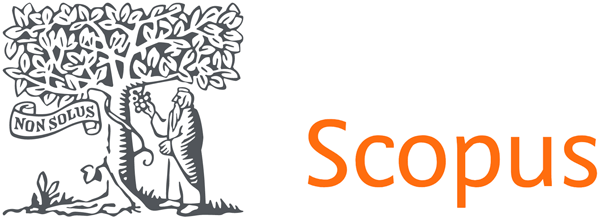CIVIL-MILITARY COOPERATION AND GENDER PERSPECTIVES
EUROPEAN AND UKRAINIAN REALITIES
DOI:
https://doi.org/10.9771/rds.v4i2.53892Palavras-chave:
civil-military cooperation, civil supervision, court ruling, gender policy, human security conceptResumo
The article is primarily aimed at studying and analysing social relations, roles, and dynamics in the field of civil-military cooperation and gender policy. The authors analyze various social stereotypes, political decisions, legislation, and its impact on gender equality and interaction between civil society and the military. In turn, empirical data is used to confirm or refute hypotheses about gender imbalances, challenges and achievements in these areas, but this research is focused on social analysis and understanding of current challenges in the chosen field. The research presupposed the use of various scientific methods, but its base was formed by general and special scientific and philosophical methods. Particular emphasis was placed on the formal-legal approach that facilitated in-depth analysis of international legal statutes, doctrinal perspectives, and rulings from the European Court of Human Rights concerning gender policies embedded within the framework of civil-military cooperation. The authors conduct a theoretical legal examination of civil-military cooperation within the framework of human rights defense, elucidating its distinctive features. Additionally, the paper places considerable emphasis on gender equality in the context of armed conflicts and civil-military cooperation, drawing upon international legal perspectives and scholarly methodologies.
Downloads
Referências
Agreement between the Parties to the North Atlantic Treaty regarding the Status of their Force. (1951). Retrieved from https://www.nato.int/cps/en/natohq/official_texts_17265.htm
Allied Joint Doctrine. (2010). Retrieved from. file:///C:/Users/%D0%9F%D0%9A1/Downloads/AJP-01d(0).pdf
Annan, K. (2000). We the peoples: a UN for the twenty-first century. New York: United Nations Department of Public Information, 80 p.
Balon, B., Björsson, A., Geiss, T., Holvikivi, A., Kadar, A., Lysychkina, I., & Watson, C. (2016). Teaching gender in the military: a handbook. Geneva: DCAF, 232 p.
Boutros-Ghali, B. (1992). An Agenda for Peace: Preventive Diplomacy, Peacemaking and Peace-keeping. New York: UN Department of Public Information, 53 p.
Case of Hanan v. Germany. (2021). Application no. 4871/16. Retrieved from https://hudoc.echr.coe.int/fre#{%22itemid%22:[%22001-208279%22]}
Case of Konstantin Markin v. Russia. (2012). Application no. 30078/06. Retrieved from https://hudoc.echr.coe.int/ukr#{%22itemid%22:[%22001-109868%22]}
Centre interarmées de concepts, de doctrines et d’expérimentations. (2012). Doctrine interarmées DIA-3.10.3(A)_CIMIC. Retrieved from https://www.irsem.fr/data/files/irsem/documents/document/file/32/20120717_np_cicde_dia-3-10-3a-cimic.pdf
Council of Europe. (1950). Convention for the Protection of Human Rights and Fundamental Freedoms. Retrieved from https://rm.coe.int/1680063765
Council of the European Union. (2003). European Security Strategy. Retrieved from https://data.consilium.europa.eu/doc/document/ST-15895-2003-INIT/en/pdf
General Assembly Security Council. (1995). Resolution А/50/790. Retrieved from https://peacemaker.un.org/sites/peacemaker.un.org/files/BA_951121_DaytonAgreement.pdf
Glasius, M., & Kaldor, M. (2005). A human security doctrine for Europe: project, principles, practicalities. Retrieved from https://www.europarl.europa.eu/meetdocs/2004_2009/documents/dv/human_security_report_/human_security_report_en.pdf
Hrytsai, I.O. (2018). The mechanism of ensuring the principle of gender equality: theory and practice. Kyiv: Khai-Tek Pres, 560 p.
Huntington, S. (1957). The soldier and the state: the theory and politics of civil–military relations. Cambridge: Harvard University Press.
Koropatnik, I.M. (2016). Administrative and legal principles for interaction between civil society and the Armed Forces of Ukraine. Kyiv: Interregional Academy of Personnel Management, 519 p.
Kryvenko, Yu.V. (2017). Regarding the need to legally regulate the civil-military cooperation of the Armed Forces of Ukraine. Chasopys Tsyvilistyky, 23, 35-39. Retrieved from http://dspace.onua.edu.ua/bitstream/handle/11300/9110/35-39.pdf.pdf?sequence=1&isAllowed=y
Manza, J. (2020). Good governance and building integrity in the defence and related security sector. Retrieved from https://www.nato.int/nato_static_fl2014/assets/pdf/2020/11/publications/201113-BI-Refrence-Curriculum-en.pdf
Nastiuk, V.Ya., Karelin, V.V., & Koropatkin, I.M. (2020). Legal regime of civil-military cooperation as an effective means to ensure the joint forces operation in Ukraine. Law and Society, 1, 183-189. https://doi.org/10.32837/apdp.v0i86.2426
NATO Standardization Office. (2014). Allied Joint Doctrine for the Military Contribution to Peace Support. Retrieved from https://assets.publishing.service.gov.uk/government/uploads/system/uploads/attachment_data/file/624153/doctrine_nato_peace_support_ajp_3_4_1.pdf
NATO Standardization Office. (2015). Allied Joint Doctrine for the Military Contribution to Humanitarian Assistance. Retrieved from https://assets.publishing.service.gov.uk/government/uploads/system/uploads/attachment_data/file/625788/doctrine_nato_humanitarian_assistance_ajp_3_4_3.pdf
Petrova, L.O., & Panfilov, O.Yu. (2020). Gender equality in the army: women's participation in military action in the Anti-Terrorist Operation (Joint Forces Operation). Current Issues of Development of the Armed Forces of Ukraine, 2(64), 19-25. https://doi.org/10.30748/zhups.2020.64.03
Press Conference by High Representative for Implementation of Peace Agreement on Bosnia and Herzegovina. (1996). Retrieved from https://www.un.org/press/en/1996/19960731.bildt31.jul.html
Strauss, L. (1957). Machiavelli's intention: The Prince. The American Political Science Review, 51(1), 13-40. https://doi.org/10.2307/1951768
Strebkova, Yu. (2018). Training of social workers in the context of civil-military cooperation (gender aspect). Ukrainoznavstvo, 1(20), 54. Retrieved from https://ela.kpi.ua/bitstream/123456789/30189/1/Strebkova_ukr_CIMIC%20_2018.pdf
Titko, E.V. (2021a). International legal standardization of forces of civil-military cooperation (СIMIС). In Proceedings of Research and Practice Conference on Human Rights Protection under Armed Conflict (Kyiv, April 2021) (pp. 55-57). Kyiv: Ukrainian Center for Human Rights and the Development of Educational Innovations.
Titko, E.V. (2021b). International legal aspects of civil-military cooperation (CIMIC). Vinnytsia: TOV "Nilan-LTD", 544 p.
United Nations General Assembly. (1970). Declaration on Principles of International Law concerning Friendly Relations and Co-operation among States in accordance with the Charter of the United Nations. Retrieved from https://www.auswaertiges-amt.de/blob/2165236/b03d8c5c0c74fc7c9947bee51cd27163/un-gv-res-freundschaftliche-beziehungen-data.pdf
United Nations General Assembly. (1992). Resolution А/46/882. Retrieved from http://www.un.org/en/ga/search/view_doc.asp?symbol=A/46/882&referer=http://research.un.org/en/docs/peacekeeping/secretariat&Lang=R
United Nations General Assembly. (2015). Resolution A70/383. Retrieved from http://www.securitycouncilreport.org/atf/cf/%7B65BFCF9B-6D27-4E9C-8CD3-CF6E4FF96FF9%7D/A_70_383.pdf
United Nations Security Council. (2000). Resolution S/RES/1325. Retrieved from https://peacemaker.un.org/sites/peacemaker.un.org/files/SC_ResolutionWomenPeaceSecurity_SRES1325%282000%29%28english_0.pdf
Vavilova, N.V. (2016). Implementation of the gender policy in the Armed Forces of Ukraine. Collection of Scientific Works of the Center for Military and Strategic Studies of National University of Defense of Ukraine Named after Ivan Chernyakhovsky, 1, 140-143. https://doi.org/10.33099/2304-2745/2016-1-56/140-143
Watson, C. (2020). Defence and gender. Geneva: Geneva Centre for Security Sector Governance, 76p.
Webster, K., Chen, C., & Beardsley, K. (2019). Conflict, peace, and the evolution of women's empowerment. International Organization, 73(2), 255-289. https://doi.org/10.1017/S0020818319000055
Downloads
Publicado
Como Citar
Edição
Seção
Licença
Copyright (c) 2023 Autores

Este trabalho está licenciado sob uma licença Creative Commons Attribution 4.0 International License.
- A Revista se reserva o direito de efetuar, nos trabalhos originais, alterações de ordem normativa, ortográfica e gramatical, com o intuito de manter o padrão culto da língua, respeitando o estilo dos autores.
- As opiniões emitidas pelos autores são de suas exclusivas responsabilidades.
- Os direitos de licenciamento utilizado pelo periódico é a licença Creative Commons Attribution 4.0 International License.
- Os direitos autorais pertencem exclusivamente aos autores. São permitidos o compartilhamento (cópia e distribuição do material em qualquer meio ou formato) e adaptação (remixar, transformar e readaptar o trabalho original para todos os fins, inclusive comerciais), desde que lhe atribuam o devido crédito pela publicação inicial neste periódico.
- Autores têm permissão e são estimulados a publicar e distribuir seu trabalho online após a publicação, uma vez que isso pode aumentar o impacto e a citação do trabalho publicado (Veja O Efeito do Acesso Livre).













